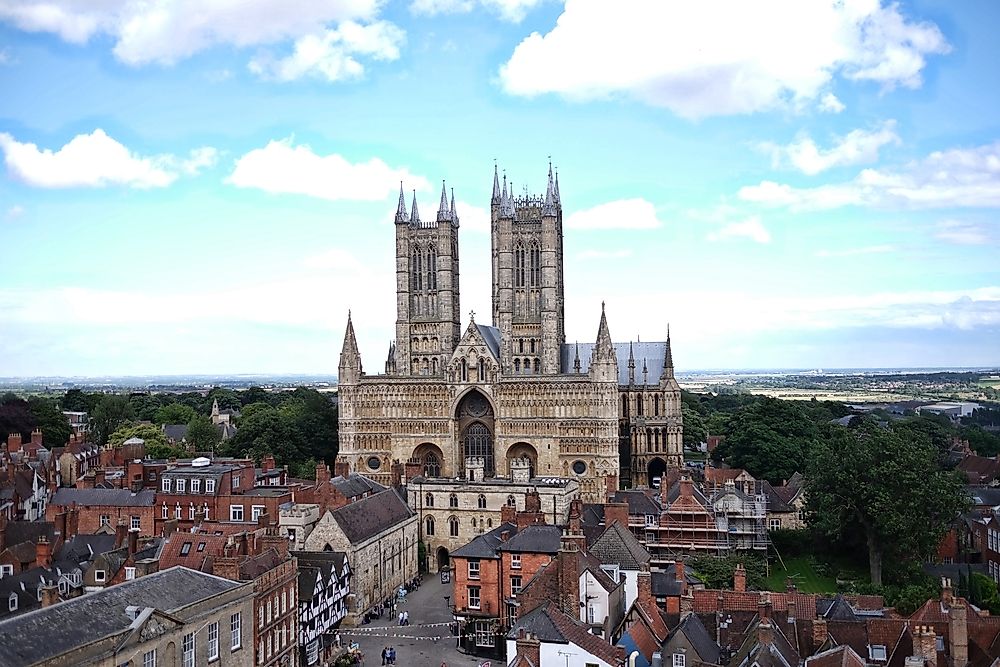Lincoln Cathedral - Notable Cathedrals

Since the 13th century, the impressive 271-foot central tower of the Lincoln Cathedral has been dominating the Lincoln Skyline. The Lincoln Cathedral, commonly referred to as the St. Mary’s Cathedral, is located in Central Lincoln, England. It is the Mother Church of the Diocese of Lincoln and acts of the seat of the Anglican Bishop. The Lincoln Cathedral is one of the antique buildings in European history with gothic architecture and containing great history preserved in its structural designs and in manuscripts and texts preserved in the Cathedral’s Library.
History
The construction of the Lincoln Cathedral commenced in the 11th century and lasted through various phases in the middle ages. After the Battle of Hastings in 1066, William the Conqueror ordered that the archdiocese of the largest diocese in England be relocated from Dorchester to Lincoln.
In many centuries of survival, Lincoln Cathedral has undergone various devastating misfortunes and disasters commencing with the 12th-century fire disaster that burnt off the roof of the cathedral and was later replaced with a boulder vault. Decades later, an earthquake wrecked the walls and roof of the original building and was then replaced with its unique gothic architecture. The Central Tower of the Cathedral collapsed in the 13th century followed by the flop of the wooden crest in the 16th century after a windstorm replacing it with wooden trusses.
Unique Features
The Lincoln Cathedral is home to numerous unique architectural designs including two rose windows which were exceptional unique features of medieval architecture in England. The Dean’s eye on the northern side and the Bishop’s eye on the southern side have survived as the only unique features of medieval architecture. The cathedral’s interior features spectacular vaults both original and experimental. The vaults are unique to the nave, aisles, choir, and chapels of the cathedral with each separate area of the cathedral are solely identified by the vault designs of the space.
To keep the Lincoln Cathedral in place wooden trusses were used together with queen posts and collar beams. The trusses in the cathedral were built in triangular designs and supported with secondary rafters to ensure the building was able to withstand strong wind by distributing the weight.
Conservation
As it happened with most antique buildings in Britain, most of the feudal art in the Lincoln Cathedral was destroyed in the Civil War. Many statues had their heads separated after one architect mistakenly placed the heads of the male bishops on the bodies of the female figurines. However, some tumblers were able to survive due to their inaccessible location.
Hugh of Wells, one of the Bishops in the Cathedral was among the signatories of the Magna Carta and for hundreds of years one of the four original copies of the Charter is reserved in the Cathedral’s Library. The Wren Library in the Cathedral has a rare collection of 277 manuscripts and texts including the Venerable Bede containing the great history of medieval times.
The Lincoln Cathedral has a conservation department endowed with the mandate to protect the cathedral’s rich architecture which is interpreted within the duties of the clergy and masons, governance under the bishop, and the ecclesiastical hierarchy of the cathedral’s liturgy and processionals.











